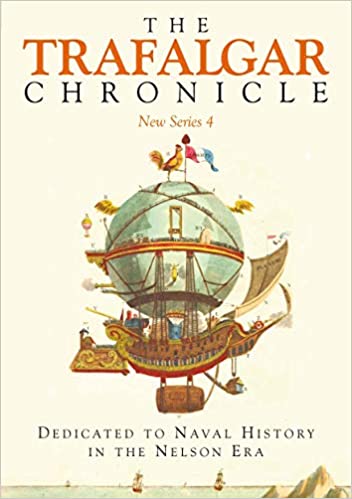
Reviewed by CAPT Ken Hagan, USNR (Ret.)
The brilliant audacity of this volume merits the highest praise. In no way is it yet another recounting of blasts, broadsides, and bloodletting. Instead, Peter Hore has assembled a collection of magnetic essays depicting Horatio Nelson as an Irishman and portraying the hardscrabble victories ashore won by the forlorn wives of mariners whose absence our august and esteemed friend, N.A.M. Rodger, noted “was hard on women, as it still is.” (57) Nicholas aside, the woman’s perspective on all of this male-wrought maritime violence can be seen in essays by Susan K. Smith, Lynda Sebbage, and Anna Kiefer.
The superlative volume commands us to step back from the hagiography of strategic deployments and tactical maneuvers to contemplate the broad societal and human core of warfare, naval or otherwise. In this fraught endeavor, Peter Hore, once a captain in the Royal Navy, again will show the way to a deeper and more humane understanding of warfare with his next book, Freddie’s Fairies, his somewhat disparaging title for a paean to the heroic and brilliant naval women known collectively as WRNS. Their ingenious intellectual labour in the Y-service permeated Bletchley Park in World War II.
More to the point of this review, The Trafalgar Chronicle explores personal histories of sailors in what American navalists might call the era of Nelson. This fine book exposes a naval skeletal structure largely impenetrable from outside the wooden walls of the Royal Navy’s world-conquering fleets. The lives of two brothers exemplify the human sinews of the world’s greatest navy at the pinnacle of the age of fighting sail. Halifax-born George Augustus Westphal entered the Royal Navy at age 13 in 1798, as a “first-class volunteer” on board a frigate. Felled at Trafalgar, he lay stricken “by the side of his Lordship,” (87) the mortally wounded Nelson. Westphal defeated his own wounds and went on to experience a distinguished at-sea career and a retirement culminating in promotion to the rank of admiral.
In fraternal contrast, George’s elder brother, Philip, also lived out his life in the Royal Navy, but glory eluded him. He spent many years ashore on half-pay. He nonetheless endured and died a full admiral in 1880, the oldest naval officer in the U.K., an achievement of some note.
Geographically, socially and racially far removed from the Westphal brothers, was Captain John “Punch” Perkins, a Jamaican man born to an enslaved woman in 1750. In the late 1700s, he was the only black man to reach “officer rank” (204) in the Royal Navy. As if in denial, the English press routinely portrayed him as “a brave white British naval officer.” (206) He assuredly was brave, but also black and a slave-owner. This incongruous duality may have led to a superficially untroubled conscience since the principal role of the Royal Navy in his region of operations was the defense of British slave colonies. (208)
For American readers in this time when Black Lives Matter, Perkins’ career should stimulate sober contemplation of the tortured history of black Americans in the U.S. military. More broadly, the superbly illustrated volume ought to awaken us to the diversity and stubborn dedication of the men and their women ashore who served for much of their lives in a navy that was not Nelson’s alone.
The Trafalgar Chronicle: New Series 4, Journal of the 1805 Club, ed. Peter Hore (Barnsley, UK: Seaforth Publishing, 2019). £ 20.00
Reviewed by Kenneth J. Hagan, Professor and Museum Director Emeritus, U.S. Naval Academy, Captain, USNR (Ret.)
Purchase your copy today: amzn.to/350vNJM

